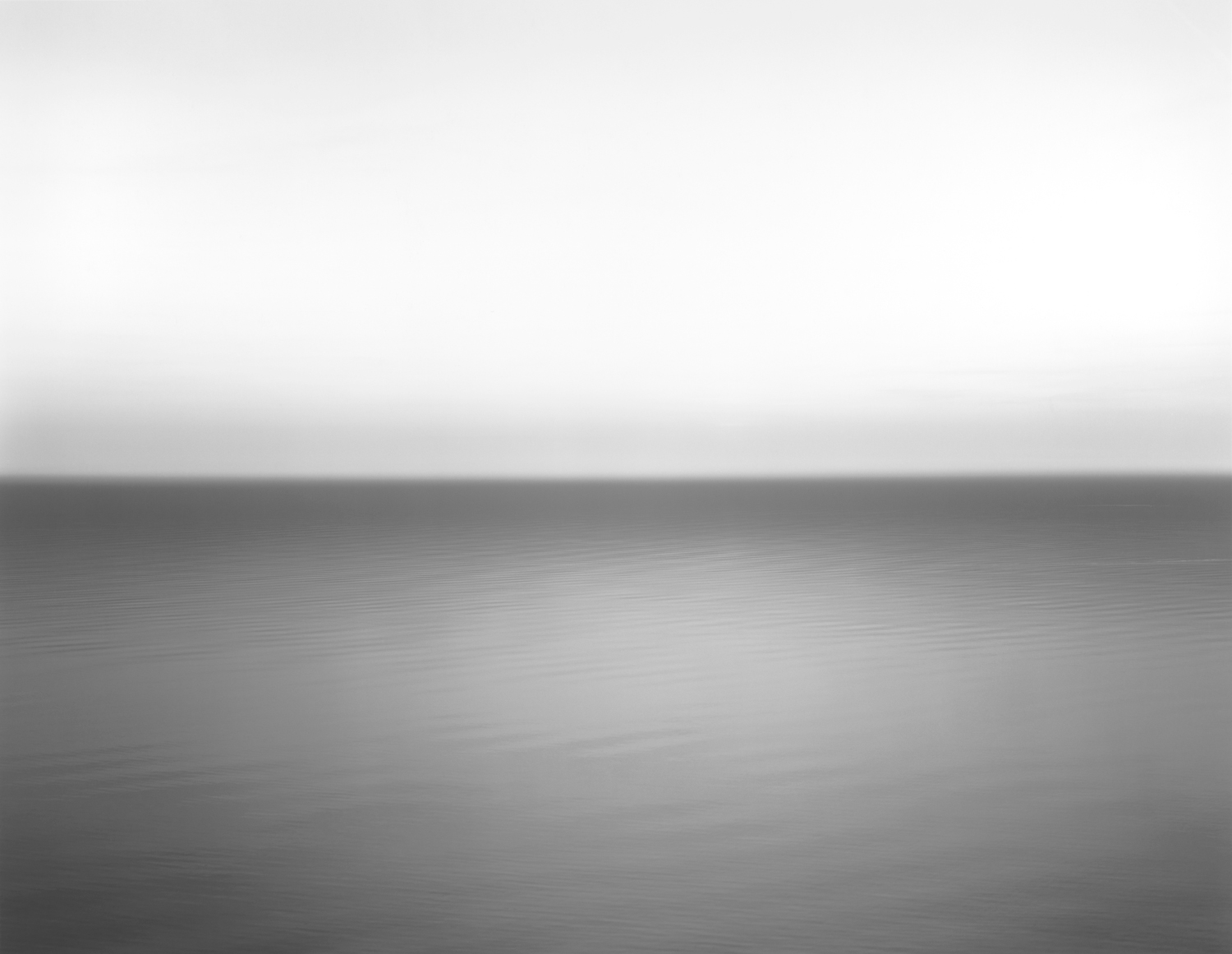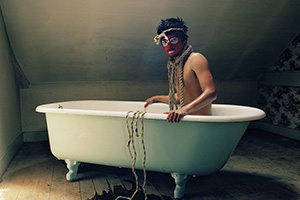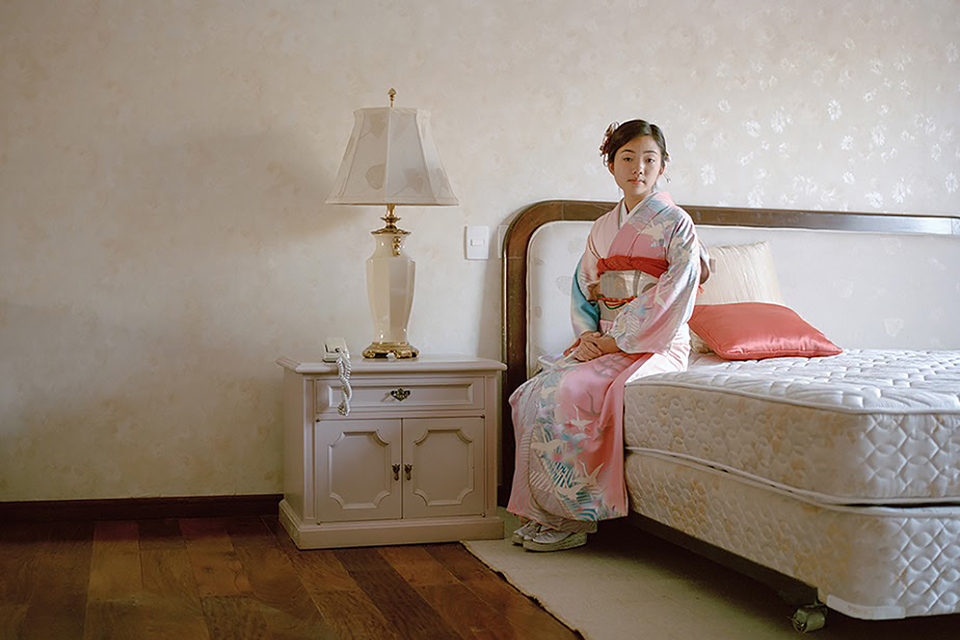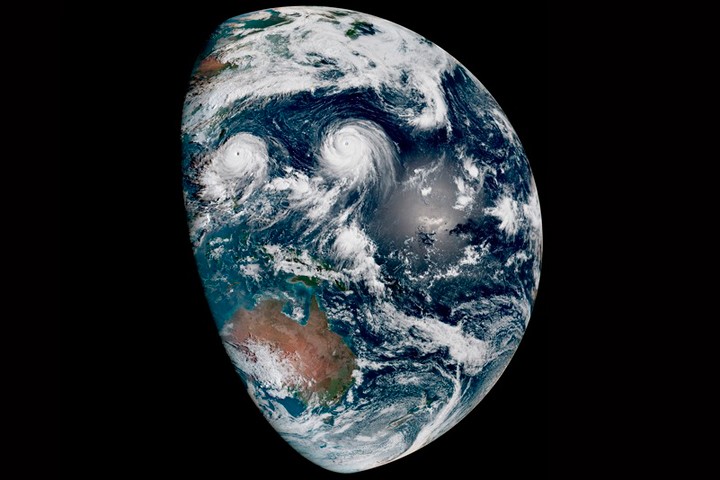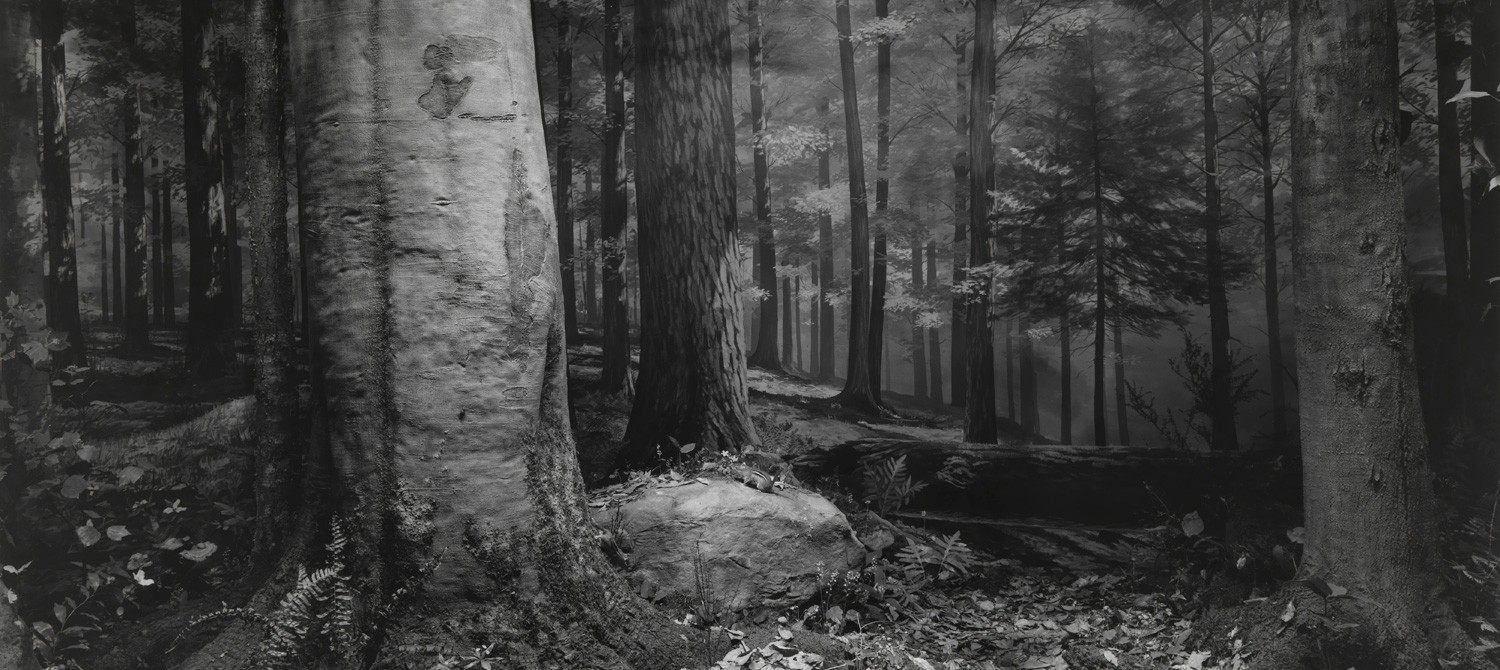
Hiroshi Sugimoto: At Times, My Fantasies Were So Vivid I Thought I Had a Mental Disorder

Born in Tokyo. In 1970 graduated from St. Paul’s University in Tokyo with a degree in Political Science and Sociology. Received a BA from Art Center College of Design in Los Angeles in 1974 and moved to New York City. Hiroshi Sugimoto lives and works in the US and Japan. He became world-famous after creating his series, Dioramas and Portraits, that consist of photographs taken in different museums around the globe. In those series Sugimoto ‘brought to life’ wax figures from Madame Tussauds and dioramas from American local history museums. Nowadays, his works are part of the collection at the Guggenheim Museum, the Metropolitan Museum, and the Tate Gallery in London.
Dioramas
Both my career and this series started with a photograph of a polar bear taken in 1976 at the American Museum of Natural History in NYC. The stuffed bear was a part of the museum diorama which captured my imagination. At some point this exhibit seems more real to me than reality and my life itself. I tried to convey this urgent feeling of the reality of the exhibit behind the glass in my photograph. The photograph of a bear attracted the attention of art critics, and I decided to continue. So I keep photographing the scenes from distant past created by the museum employees in San Francisco, Los Angeles, Denver, Pittsburgh, Boulder, and other cities.
Early on, I was looking for the reflection of modern problems in these scenes. The example of it is my early work Hyena-Jackal-Vulture from 1980, where the gloomy feast of the vultures conveys the atmosphere of the New York City art scene, and I feel I am an invisible guest at this dining. Later, my approach to Dioramas changed: I wanted to break away from the present and immerse myself into the distant past together with the museum exhibits. I wanted to see the ancient world as something tangible and real.
The most difficult thing about it is probably making the unreal real, bringing dead nature back to life. No technical tricks help, there are no ready-made light schemes, and there is no special advice on how to treat the film. It will not work out for you if you don’t have a secret shaman gift. When I work with dioramas or Madame Tussauds characters, I repeat a spell in my head: “Please, come back to life! Please, come back to life!”
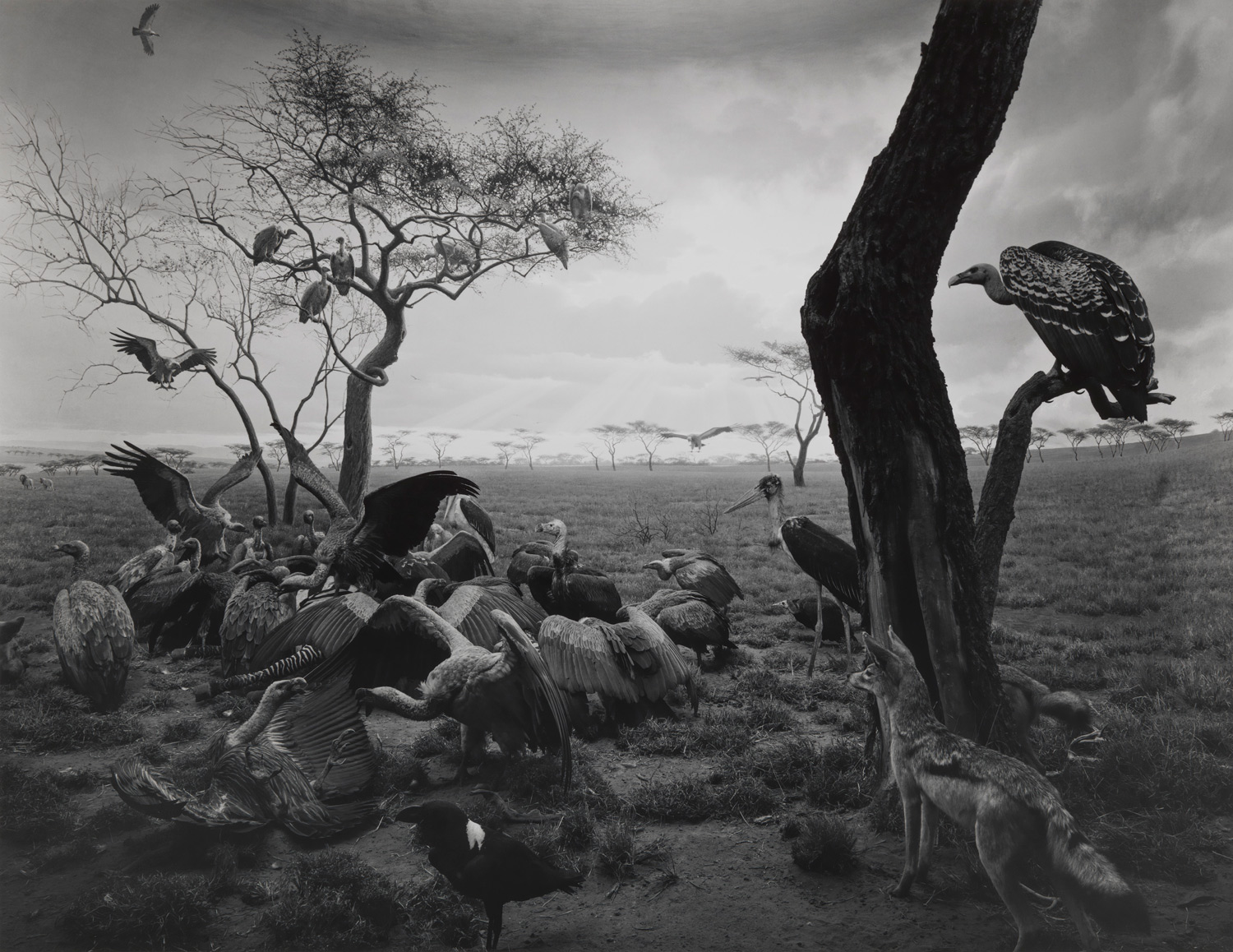
Theaters
You shouldn’t think that I am someone who walks the streets with a camera looking for a story. What usually happens is completely different: I have a story in my head, and I try to recreate it in life. I am a person with an active imagination, and it made me suffer when I was younger. At times, my fantasies were so vivid I thought I had a mental disorder. Could I find work with visions like this? And later I calmed down and decided that I could make my fantasies into modern art and sell them for a good price.
The Theaters series is also a fantasy of mine. I wanted to shoot a movie that would fit in one frame. I was aware that the diaphragm will be open for two or three hours, and I will get a glowing rectangle of the screen as a result. For me though, it is not just a wide rectangle, but time concentrated in one frame. I started taking photographs for this series in old American movie theaters in late 1970s, where I watched tenth-rate Hollywood productions, the plots or titles of which I didn’t even remember. When I came to a screening, I opened the shutter when the movie started and closed it during the end credits. And I needed to watch the movie at least once before the shoot, to set up the camera correctly.
I do not shoot in movie theaters anymore. But I continue working on this project in opera theaters in Italy and America’s abandoned movie halls. I am my own boss here — I put a screen on the stage of an empty theater or movie hall and choose a movie I like. I often watch Italian movies from the 30s and 40s in opera theaters, and I often watch my favorite movies in abandoned movie halls.
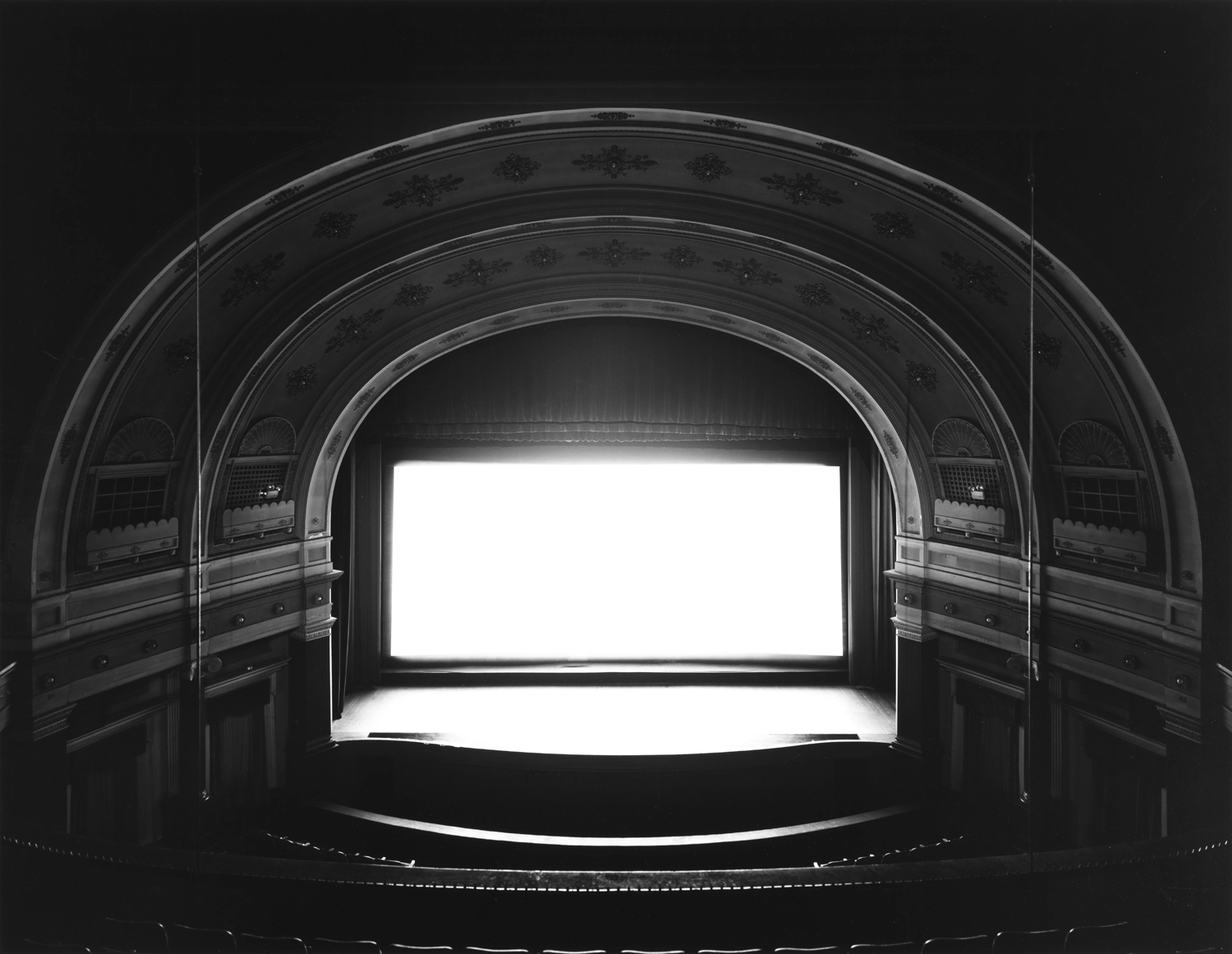
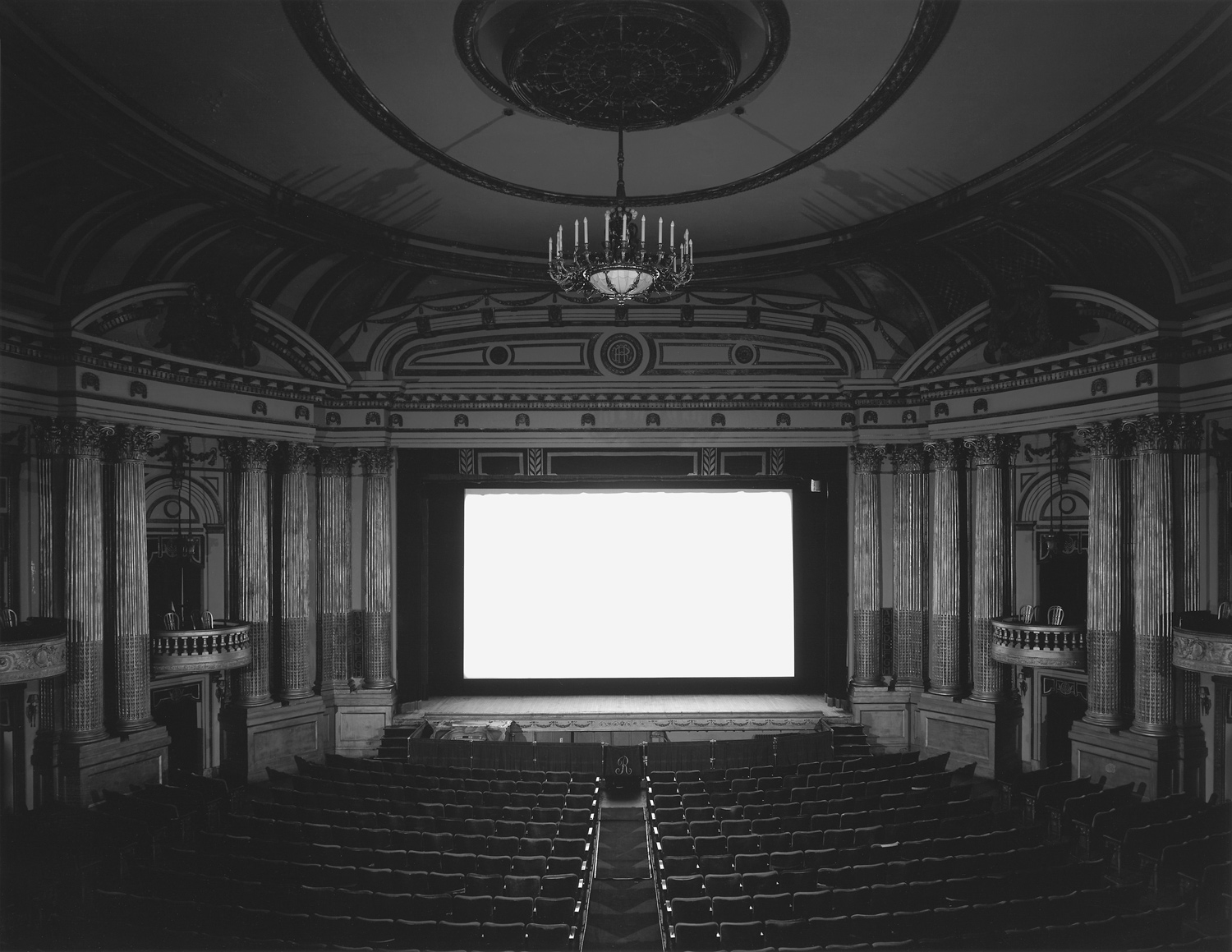
Seascapes
The Seascapes series is also a fantasy where I imagine that I see the seas and oceans the way our ancestors saw them. It doesn’t matter much to me, whether it was the White Sea or the Aegean Sea, what matters is the final picture. I use long exposure for all the seascape photographs, about two hours. Long exposure makes the photographs figurative, like minimalist paintings. They usually look like squares, divided into two equal parts by the horizon. One part is almost white air, and the other is dark water. However, I also have monochromatic squares in the series, where the thin line between air and water is almost erased. Unfortunately, I had to stop working on this series after 9/11. The airports imposed stricter border control rules, and my bags were X-rayed, so all the film was damaged. Now the situation went somewhat back to normal, and you can travel with the film without X-raying them again.
